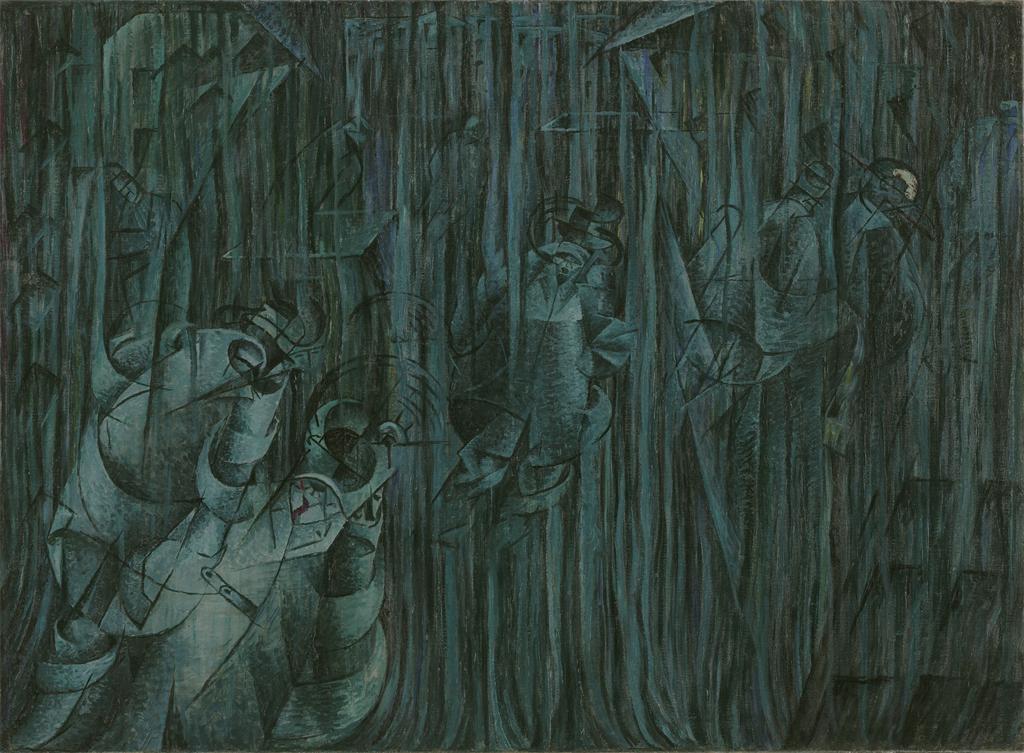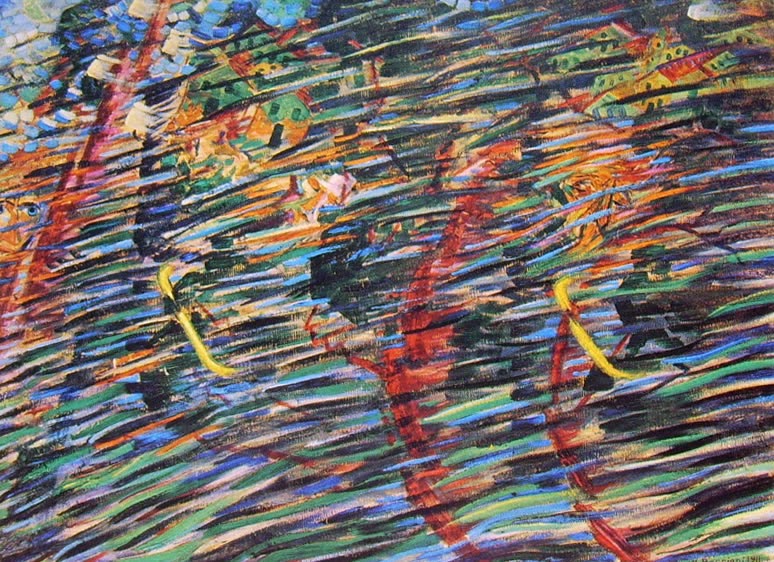3 + 3: Umberto Boccioni’s Stati d’animo
In 1911 Umberto Boccioni made two versions of the same work, Stati d’animo: Gli addii, Quelli che vanno, and Quelli che restano. The difference between the two series of three paintings could be described as the first being a type of “pure” Futurism, the second made after exposure to Cubist influences. But the subject and narrative of the paintings is the same: Unknown figures meet on the platform of a train station, say their farewells, and then either depart on the train or stay behind.
In Gli addi people embrace, clasped in a vortex that is going to crumble. Quelli che restano stand on the platform as straight or wavy lines, strictly vertical and rigid, as it is impossible to move forward even as it is unthinkable to go back. Quelli che vannoseem to fly, released from the force of gravity, already gone from this life.
The Futurists may have thought that modern Italian “culture” did not cultivate anything, and that museums no longer offered provocative spaces for contemplation and understanding. But even though art movements seemed stagnant, Boccioni knew that everything is always moving, even when it seems to stand still.
Like Boccioni, art scholars and art lovers try to find the vibrancy in what is still, the stable center in the whirlwind of activity. To ensure that the Italian Art Society remains at balance even as it accelerates forward, in honor of the 30thanniversary of IAS, members are asked to consider donations in derivations of 3 and / or 30.
Whether that means a donation of $3 or $300, be assured that any donation goes far in supporting IAS’s mission, programs, fellowships, charitable activities, and publications.
As one cycle ends another begins, so it is also a good time to join IAS or renew your current membership (all current memberships expire on 31 December). Remember to invite colleagues, friends, and especially students, who are interested in or admirers of Italian art, architecture, and visual culture to feel welcomed to jointhe IAS.
Reference: Sanford Kwinter, “Landscapes of Change: Boccioni’s “Stati D’animo” as a General Theory of Models.“ Assemblage, no. 19 (1992): 50-65.
Umberto Boccioni, States of Mind II: Those Who Leave (Quelli che partono), 1911. The Museum of Modern Art, New York City. Accession No. 65.1979, No. 78653; and original version, courtesy of Tristram Strauss.
Umberto Boccioni, States of Mind III: Those Who Stay, (Quelli che restano) 1911. The Museum of Modern Art, New York City. Accession No. 66.1979, No. 78660; and original version, courtesy of Tristram Strauss.
Umberto Boccioni, States of Mind I: The Farewells (Gli addii), 1911. The Museum of Modern art, New York City. Accession No. 64.1979, No. 78648; ; and original version, courtesy of Tristram Strauss.
Further Reading:
Umberto Boccioni and Richard Shane Agin and Maria Elena Versari, eds. Futurist Painting Sculpture (Plastic Dynamism). Los Angeles: Getty Research Institute, 2016.
Walter Adamson, Emily Braun, et. al. Italian Futurism, 1909-1944: Reconstructing the Universe. New York: Guggenheim Museum, 2014.
Posted by Jean Marie Carey





